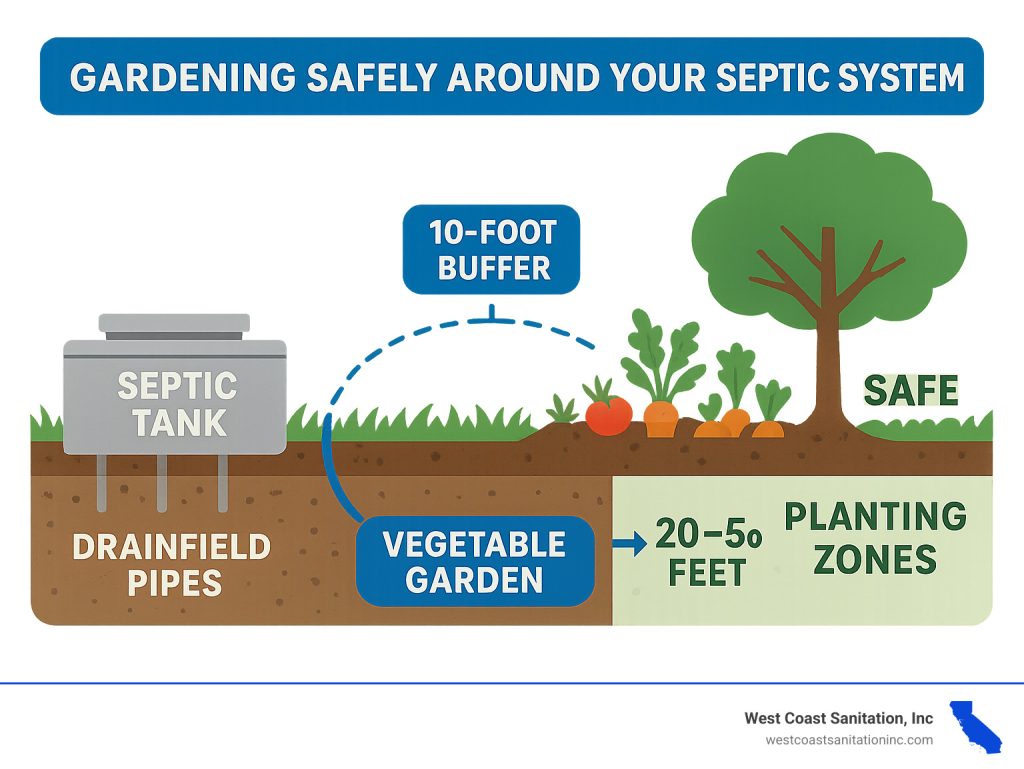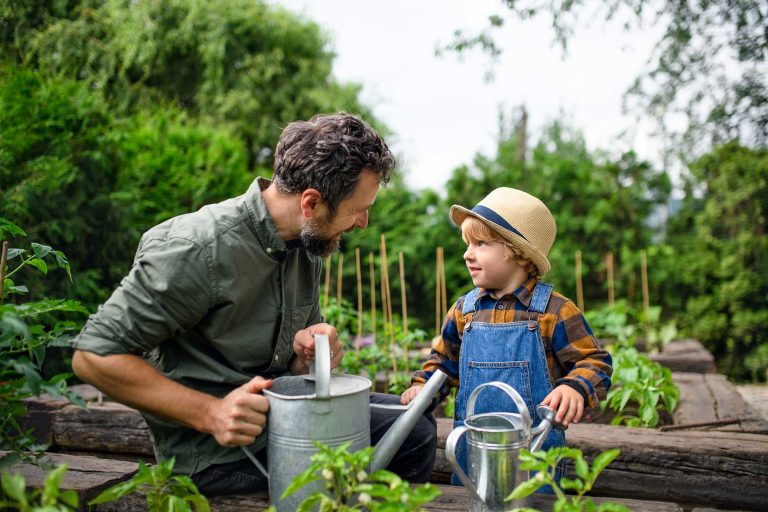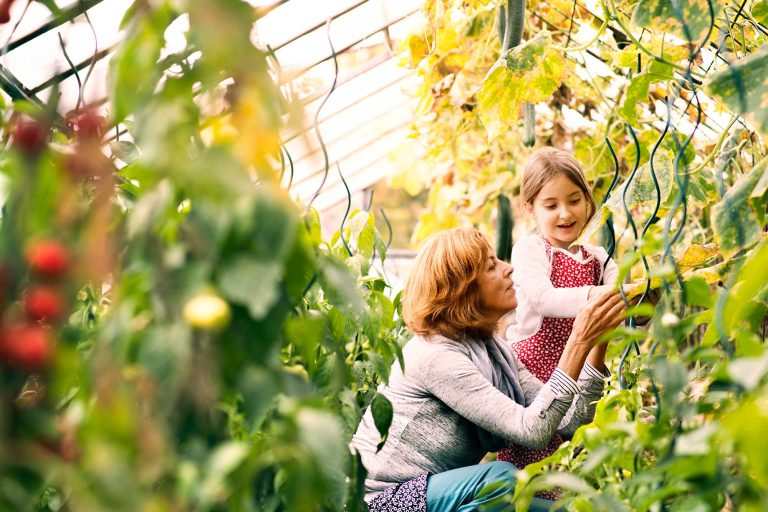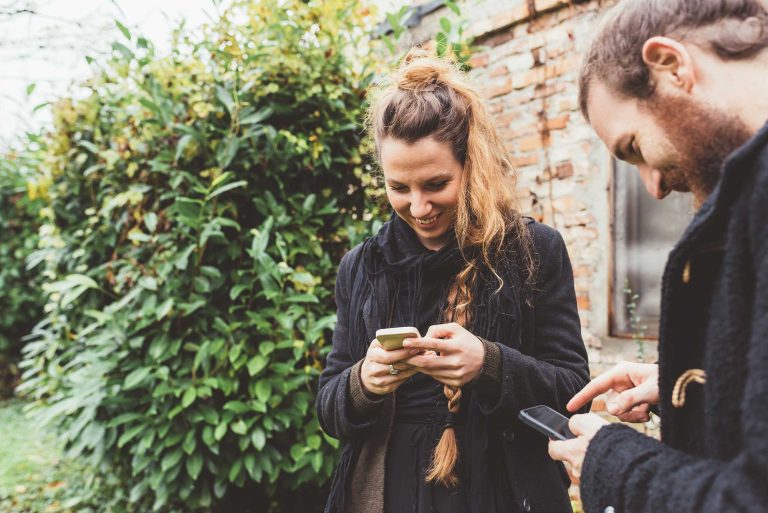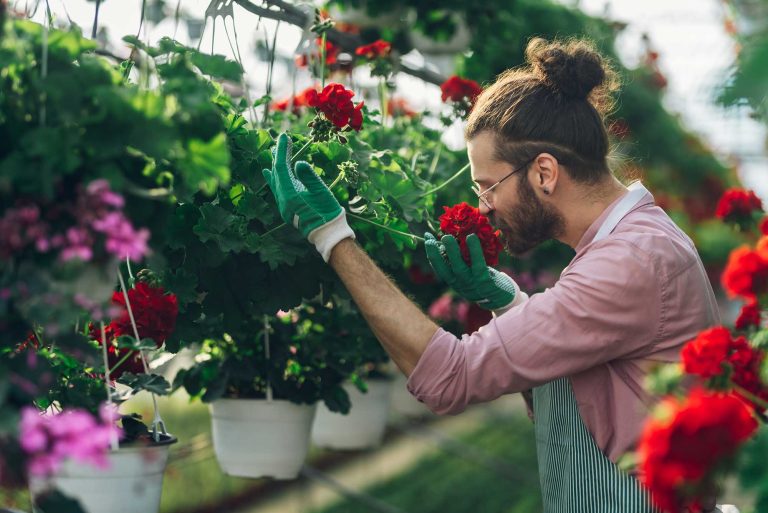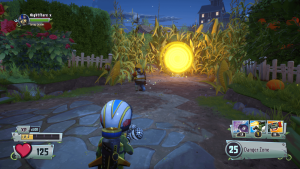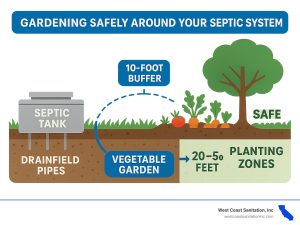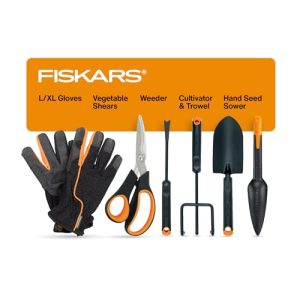Imagine stepping into your backyard and seeing a vibrant garden thriving right over your septic field. You might wonder, “Can I plant a garden on my septic field?”
This question isn’t just about adding beauty to your outdoor space; it’s about using every inch of land wisely. You might be tempted to transform this seemingly unused area into a lush oasis. Before you dive into the world of gardening, there are crucial aspects to consider.
Doing it right could save you from costly repairs or health risks. You’ll learn how to balance aesthetics, functionality, and safety. Keep reading to discover if your septic field can become the garden of your dreams without compromising your home’s health.
Understanding Septic Systems
Planting a garden on a septic field can be tricky. Roots may damage pipes and disrupt the system. Choose shallow-rooted plants to avoid problems and enhance the landscape safely.
Understanding the intricacies of septic systems is crucial if you’re considering planting a garden on your septic field. This knowledge ensures you make informed decisions that protect both your garden and the functionality of your septic system. Let’s explore how these systems work and what they comprise.Functionality And Design
A septic system is your home’s private sewage treatment facility. Its primary function is to process and dispose of household wastewater safely. Designed to operate underground, it treats and disperses wastewater from kitchens, bathrooms, and laundry rooms. Most systems include a septic tank and a drain field, also known as a leach field. The septic tank acts as a holding chamber where solids settle, and liquids flow to the drain field. This design ensures that only treated water is released back into the environment.Components Of A Septic Field
The septic field plays a vital role in wastewater management. It consists of a network of perforated pipes laid in gravel-filled trenches. These pipes disperse the liquid from the tank into the surrounding soil. The soil acts as a natural filter, removing harmful bacteria and nutrients before the water reaches groundwater sources. This component is essential for maintaining environmental health and preventing contamination. While the idea of planting a garden on your septic field might be appealing, understanding these components is key. Ask yourself: How might your gardening plans affect this delicate balance?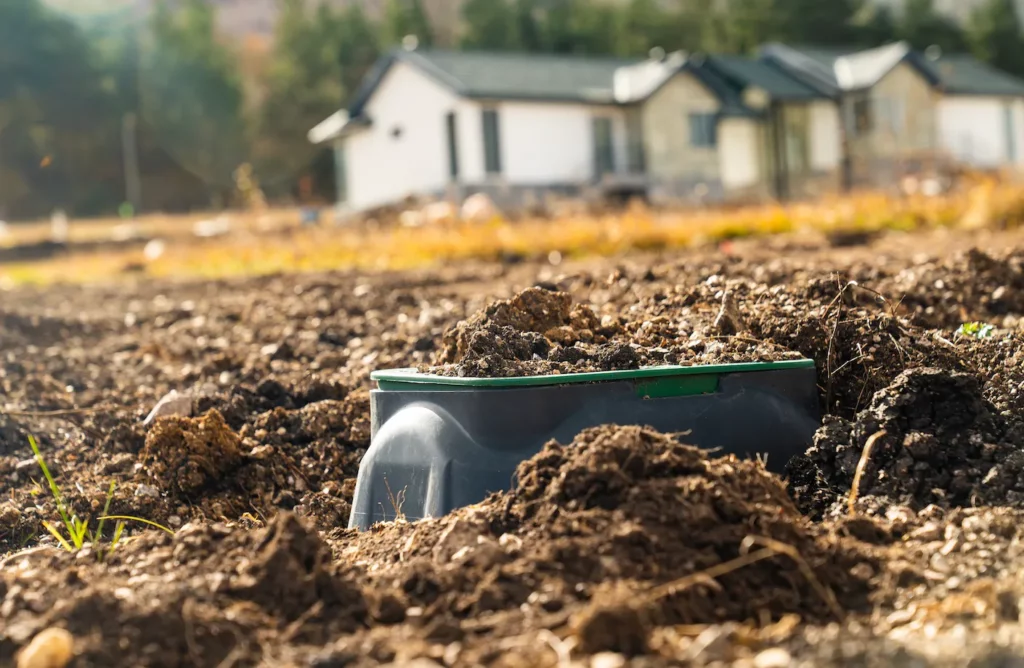
Credit: www.delvalseptics.com
Impact Of Gardening On Septic Fields
Planting a garden on a septic field can be tricky. Shallow-rooted plants are usually safe, while deep-rooted ones might damage the system. Proper planning helps maintain both your garden and septic health.
Planting a garden on your septic field is an intriguing idea, offering a dual benefit of utilizing space and potentially enhancing your landscape. Yet, it’s crucial to understand the impact gardening can have on your septic system. By weighing the benefits against the risks, you can make an informed decision on whether to transform your septic field into a thriving garden.Potential Risks
Gardening on a septic field comes with certain risks. The roots of plants, especially those of trees and shrubs, can infiltrate and damage septic pipes. This can lead to costly repairs and system failures. Additionally, the weight of heavy equipment or even the soil itself can compact the area, impacting the septic system’s efficiency. You might end up facing unexpected expenses if the system fails to function properly. Consider these potential pitfalls before proceeding with your gardening plans.Influence On Soil And Drainage
The type of plants you choose will significantly influence the soil and drainage of your septic field. Some plants, like shallow-rooted grasses and perennials, are less invasive and may enhance soil structure without damaging pipes. On the other hand, dense plantings can impede water absorption and drainage. This could cause surface water pooling, leading to unpleasant odors and a soggy garden. You might be wondering which plants are safe. Opt for those with non-invasive roots and a high tolerance for moisture to maintain a healthy balance in your garden and septic field.Types Of Plants Suitable For Septic Fields
Planting a garden on a septic field requires careful selection of plants. The right plants can enhance the area without damaging the system. Choosing suitable plants is crucial to prevent root intrusion and maintain system health.
Shallow Rooted Plants
Shallow rooted plants are ideal for septic fields. Their roots don’t dig deep, preventing damage. Consider options like perennial flowers and herbs. They add beauty and are safe for the septic system. Examples include lavender, marigolds, and thyme. These plants thrive without threatening the underground pipes.
Grass And Ground Covers
Grass and ground covers offer excellent coverage for septic fields. They stabilize soil and reduce erosion. Choose grass varieties that adapt well to local climates. Creeping ground covers like creeping thyme work well. They spread quickly and are easy to manage. These plants require minimal maintenance and provide a lush appearance.
Trees And Shrubs Considerations
Planting trees and shrubs near septic fields demands caution. Opt for species with non-invasive roots. Small ornamental trees like dogwood or redbud are safer choices. Shrubs such as boxwood or holly are also suitable. Avoid large trees with aggressive roots like willows or maples. Keep trees and shrubs at a safe distance to protect the septic system.
Safe Gardening Practices
Gardening on a septic field requires special care and attention. Implementing safe gardening practices ensures both plant health and system functionality. By following essential guidelines, you can create a thriving garden without harming your septic system.
Maintaining Distance From Septic Components
Keep plants away from critical septic components like tanks and drain fields. This prevents root intrusion and system damage. A safe distance helps avoid costly repairs. Choose shallow-rooted plants for areas near septic systems.
Regular Monitoring
Regularly check your garden and septic system for signs of trouble. Monitor plant growth and soil conditions. Look for wet spots or unpleasant odors. These can indicate septic issues. Early detection helps prevent major problems.
Benefits Of Gardening On Septic Fields
Planting a garden on a septic field can provide nutrient-rich soil for your plants. This practice helps with drainage and prevents soil erosion. Choose shallow-rooted plants to avoid damaging the septic system.
Gardening on septic fields offers surprising benefits. It can enhance your landscape and serve functional purposes. This practice uses space effectively and can improve the environment.Erosion Control
Planting on septic fields prevents soil erosion. Roots hold soil in place and reduce runoff. This protects the septic system and surrounding areas. A stable soil surface reduces maintenance needs. Choose native plants for best results.Improved Aesthetics
A garden on a septic field beautifies your yard. Flowers and shrubs add color and texture. This can increase property value. A well-designed garden can mask the septic field. It’s pleasing for both residents and visitors. This approach creates a harmonious blend with nature.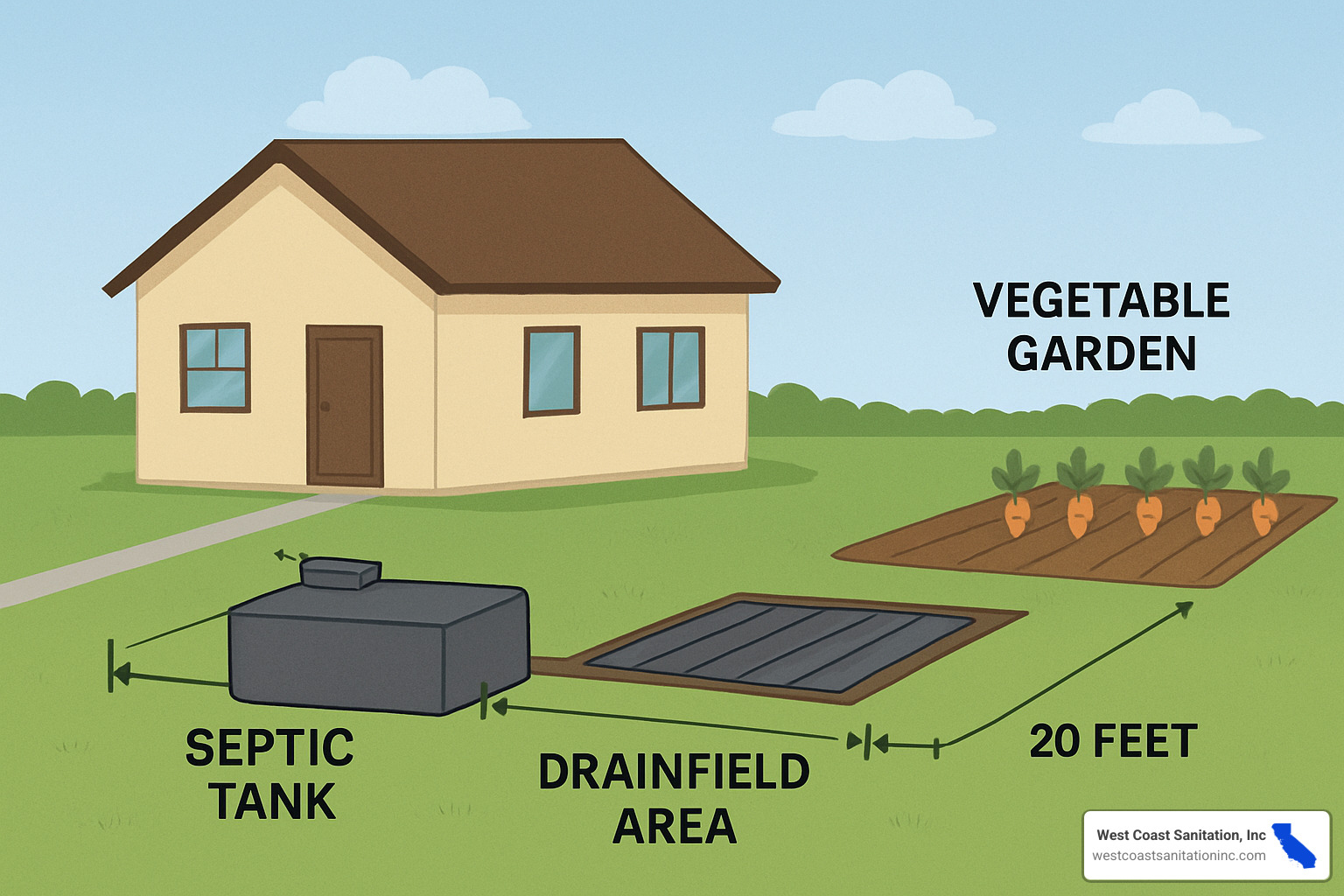
Credit: westcoastsanitationinc.com
Common Mistakes To Avoid
Planting a garden on your septic field might seem like a clever use of space, but it’s crucial to avoid common mistakes that can lead to costly repairs or environmental issues. While it can be tempting to utilize every inch of your property for a lush garden, certain practices can disrupt the functioning of your septic system. Understanding these pitfalls will help you maintain both a thriving garden and a healthy septic system.
Overwatering
One of the most frequent mistakes is overwatering. Excessive water can saturate the soil, preventing the septic system from effectively treating waste. Instead of nurturing your plants, you might end up overwhelming your septic field. Consider using drought-resistant plants that require less water. Opt for drip irrigation systems that deliver water directly to the roots, minimizing waste and runoff. Monitor the soil moisture regularly to ensure you’re not inadvertently drowning your septic field.
Heavy Equipment Use
Bringing heavy equipment onto your septic field is a gamble that rarely pays off. The weight can compact the soil, damaging pipes and other components of the septic system. Even a harmless-looking garden tractor can wreak havoc if used improperly. Stick to hand tools for gardening tasks to ensure the integrity of your septic field. If you need to transport materials, consider using lightweight carts that distribute weight evenly. Avoid parking or storing machinery on the field to prevent unintended damage.
Have you ever thought about how your gardening habits might affect your septic system? By avoiding these common mistakes, you can create a harmonious balance between a flourishing garden and a well-functioning septic field. Your plants will thank you for it, and so will your wallet!
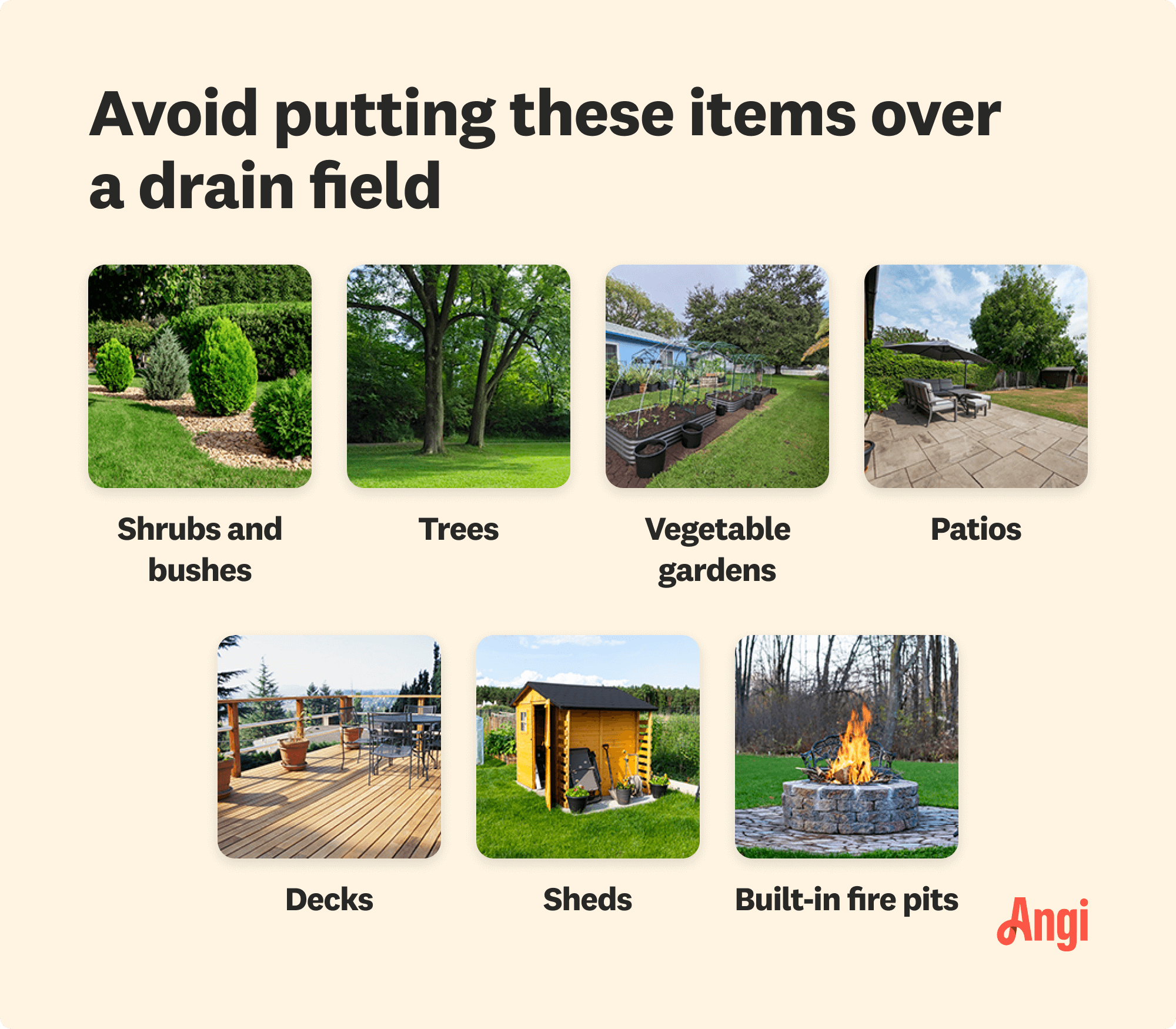
Credit: www.angi.com
Frequently Asked Questions
Is It Safe To Plant On Septic Fields?
Planting on septic fields can disrupt the system. Roots may penetrate pipes, causing blockages or damage. Choose shallow-rooted plants or grass for safety.
Which Plants Are Best For Septic Fields?
Opt for grass or shallow-rooted plants like perennials. They minimize risks to septic systems, ensuring proper function without root interference.
Can Vegetable Gardens Be On Septic Fields?
Avoid vegetable gardens on septic fields. Contaminants from septic systems may reach edible plants, posing health risks. Choose safer locations for food crops.
How Do Septic Fields Affect Plant Growth?
Septic fields can affect plant growth due to nutrient imbalance. Excess water or waste may hinder healthy plant development and soil quality.
Conclusion
Planting a garden on a septic field needs careful thought. Choose shallow-rooted plants. They are safer for your septic system. Avoid trees and large shrubs. Their roots can damage pipes. Herbs and wildflowers are great choices. They add beauty without risk.
Always check local guidelines before planting. Some areas have strict rules. Gardens need care and planning. But they can thrive with the right choices. Remember to prioritize safety. Your septic system’s health is vital. With wise decisions, you can enjoy a beautiful garden.
And keep your system working well. Happy gardening!
